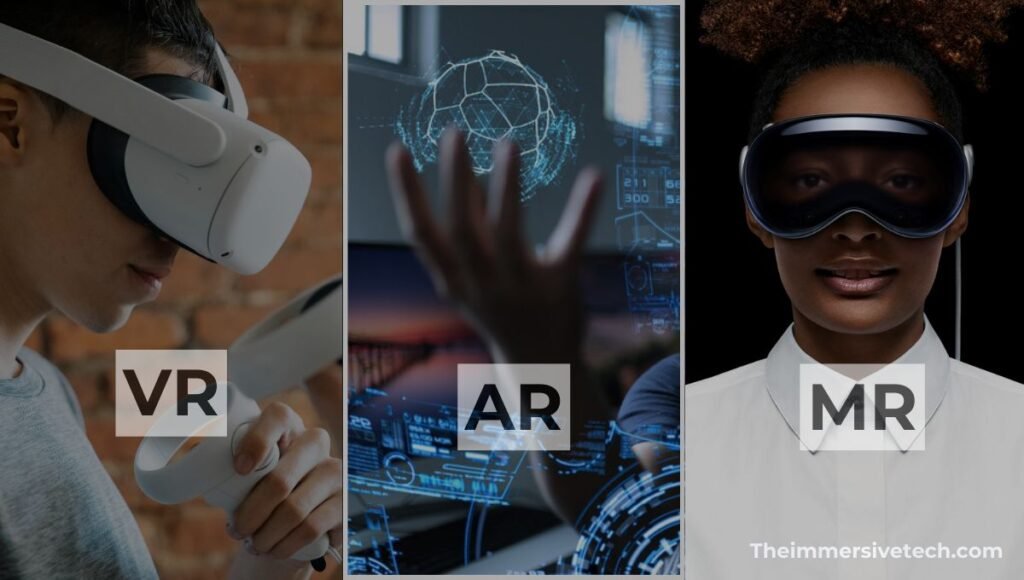More than 10.8 million VR devices were sold in 2023. The AR/VR market will increase to $23.8 million by 2025, according to the predictions. So, what could be leading to this huge increase in the next one year? What new VR trends could emerge in 2024?
We will be diving into this article for all the answers.
1. Ultra-realistic experiences
With the new and developed models coming out every now and then, virtual experiences have just gotten better. People can have real life-like experiences in virtual worlds. It’s as if they aren’t in a made-up world.
Additionally, Virtual Reality headsets used to be bulky and expensive, with low resolution causing eye strain and discomfort to the users. Due to limited head movement tracking, the VR experience was less engaging and responsive.
However, the present-day VR systems have improved with eye-tracking and hand-tracking sensors. Ultra-realistic experiences in virtual reality could be one of the main reasons why people are buying it.
2. Wireless VR
The popularity of standalone headsets has increased for this sole reason, apart from their functionality. Most of the headsets coming out nowadays are wireless, creating a great experience for the users.
This way, users can roam around freely while playing games and enjoying virtual experiences. It also increases the users’ sense of presence in the VR environment and their level of immersion.
Wireless VR experiences can also lead to social VR experiences where gamers can play together and interact with each other.
3. Expansion to XR and MR
Virtual reality is expanding to Mixed Reality (MR) and Extended Reality (XR). These two technologies are similar to Augmented Reality (AR) and Virtual Reality (VR), however, not the same.
Read in detail; difference between AR, VR and MR
XR and MR blend the real world with virtual elements seamlessly. For instance, MR allows users to interact with digital objects placed in the real world. This creates many opportunities for the design, education, and entertainment industries. All such new changes represent how we could be interacting with digital elements in the future.
4. Enhanced user experiences
In 2024, VR interfaces and experiences have become more realistic and intuitive than ever before. Some of the standard features that make it possible are voice control, eye tracking, and gesture recognition. Users can interact with the virtual elements effortlessly.
Some VR systems also make it possible to create personalized VR environments according to an individual’s preferences. This personalization also extends to various aspects, from content recommendations to virtual environments.
5. Increased accessibility and affordability
Virtual reality won’t be a niche market for long. The headsets, especially standalone headsets, are becoming cheaper now. Additionally, the growing demand for smartphone-based headsets and standalone headsets is making the technology reach a broader audience. It’s because these devices do not require a high-end PC or gaming console.
Read more: full guide on virtual reality headsets
What Could Happen In The Coming Years: A Prediction
That was all for 2024. But a lot could be changing in the coming years and so, here are some of the major future trends of VR.
1. Integration of Artificial Intelligence and VR
Artificial intelligence (AI) is becoming more integrated with virtual reality and thus, creating a more personalized and intuitive user experience. It’s because AI-powered VR experiences analyze a user’s moves, behavior, and preferences to create a personalized virtual environment.
Hence, AI with VR will create a dynamic and responsive virtual world, leading to a significant shift in how virtual reality works.

2. Immersive movies
VR also holds the potential to revolutionize the way people watch or consume movies in the future. Just by putting on the headset, users will be able to immerse themselves in the adventurous virtual space, right in the center of live action now.
Additionally, people won’t need a giant TV screen or a theatre to enjoy it. People might also be able to see the stories and events unfold from more than one angle, and maybe, influence the character choices. Such a format has been experimented by Netflix recently (not in VR, though) with their Bandersnatch movie.
3. Smart personal assistants
Imagine a human-like assistant guiding you through your day and accompanying you. They can do more than the virtual assistants on our phones and at home do, such as Siri or Alexa.
If people wear VR glasses or headsets, these assistants could help them in their daily activities and tasks. Considering the possibilities of smart virtual assistants, they could have a huge impact on various industries. For instance, these assistants could provide knowledge, perform customer service, or even monitor the quality of work.
4. Full-body motion tracking
At present, virtual reality apps track only the movements of our heads and possibly hands (if controllers or gloves are used). However, in the future, we could see full-body tracking via special full-body suits or special sensors that could be attached to the clothes.
Such suits will probably be handy for those in safety training as VR systems will be able to anayze the users’ movement precisely.
The Bottom Line
Virtual reality has only gotten better and more realistic over the years. From the first headset in the 2010s to the Apple Vision Pro, the technology has changed a lot. However, it will continue to evolve over time.
Also read







